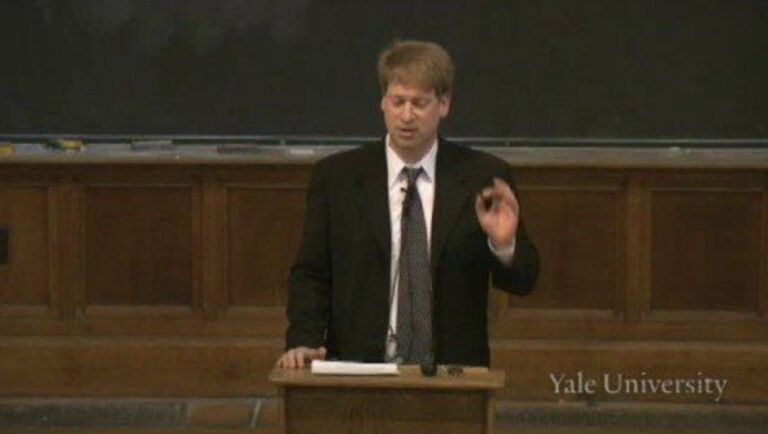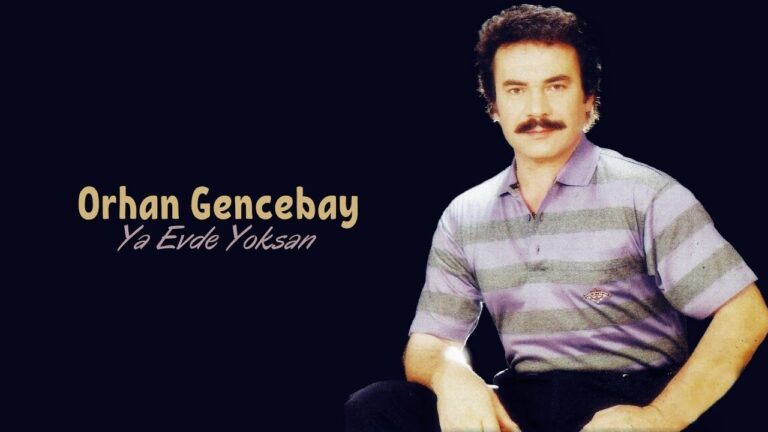20. Yüzyılın En Seçkin 100 Psikoloğu
En İyi Psikologlar Listesi Nasıl Oluşturuldu?
Yirminci yüzyılın en seçkin 100 psikoloğundan ilk 99’unu bildiren sıralı bir liste oluşturulmuştur. Seçkinlik 3 nicel değişken ve 3 nitel değişkenden alınan puanlarla ölçülmüştür. Nicel değişkenler dergi atıf sıklığı, psikolojiye giriş ders kitabı atıf sıklığı ve anket yanıt sıklığıdır. Nitel değişkenler ise Ulusal Bilimler Akademisi üyeliği, Amerikan Psikoloji Derneği (APA) başkanlığına seçilme veya APA Seçkin Bilimsel Katkılar Ödülü’nü alma ve soyadı olarak kullanılan isimdir. Nitel değişkenler sayısallaştırılmış ve diğer 3 nicel değişkenle birleştirilerek bileşik bir puan elde edilmiş, bu puan daha sonra 20. yüzyılın en seçkin psikologlarının sıralı bir listesini oluşturmak için kullanılmıştır.
Benimle terapi randevusu oluşturmak için buraya tıklayarak kendinize uygun gün ve tarihi belirleyebilirsiniz.
Not:
- JCL: journal citation list (dergi atıf listesi)
- TCL: textbook citation list (ders kitabı atıf listesi)
- SL: survey list (anket listesi)
- NAS: National Academy of Sciences (Ulusal Bilimler Akademisi)
- APA: American Psychological Association (Amerikan Psikoloji Derneği)
| Rank | Name | JCL rank | TCL rank | SL rank | NAS | APA award/president | Eponym |
|---|---|---|---|---|---|---|---|
| 1 | Skinner, B. F. | 8 | 2 | 1 | 1 | 1958 | Skinnerian |
| 2 | Piaget, Jean | 2 | 4 | 2 | 1 | 1969 | Piagetian |
| 3 | Freud, Sigmund | 1 | 3 | 3 | — | — | Freudian |
| 4 | Bandura, Albert | 15 | 1 | 5 | — | 1980/1974 | Bandura’s social learning theory |
| 5 | Festinger, Leon | 12 | 5 | 11.5 | — | 1959 | Festinger’s cognitive dissonance theory |
| 6 | Rogers, Carl R. | 28.5 | 9.5 | 9.5 | 1 | 1946/1947 | Rogerian therapy |
| 7 | Schachter, Stanley | 46 | 6 | 24 | 1 | 1969 | Schachter’s affiliation studies |
| 8 | Miller, Neal E. | 23 | 4.5 | 35 | 1 | 1958/1959/1961 | — |
| 9 | Thorndike, Edward | 40 | 50 | 9.5 | 1 | 1917 | Thorndike’s puzzle box |
| 10 | Maslow, A. H. | 37 | 14 | 19 | — | —/1968 | Maslow’s hierarchy |
| 11 | Allport, Gordon W. | 51 | 18 | 14.5 | — | 1964/1939 | Allport A-S reaction study |
| 12 | Erikson, Erik H. | 16 | 31 | 14.5 | — | — | Erikson’s psychosocial stages |
| 13 | Eysenck, H. J. | 3 | 24 | 15 | — | — | Eysenck personality inventory |
| 14 | James, William | 4 | 6.5 | 65 | 1 | 1906/—/1904 | James-Lange theory of emotion |
| 15 | McClelland, David C. | 34 | 33 | 31 | — | 1987 | — |
| 16 | Cattell, Raymond B. | 7 | 37 | 32 | 1 | — | Cattell 16 Factor Personality Questionnaire |
| 17 | Watson, John B. | 47 | 3 | 8.5 | — | —/1915 | Watsonian behaviorism |
| 18 | Lewin, Kurt | 47 | 73.5 | 8 | 1 | — | Lewinian psychology |
| 19 | Hebb, D. O. | 58 | 46 | 11.5 | — | 1979/1961/1960 | Hebbian |
| 20 | Miller, George A. | 48 | 46 | 67 | — | 1963/1969 | — |
| 21 | Hull, Clark L. | 73 | 73.5 | 14.5 | 1 | 1936/— | Hullian |
| 22 | Kagan, Jerome | 20 | 23 | 67 | — | 1987 | — |
| 23 | Jung, C. G. | 50 | 49.5 | 20 | 1 | — | Jungian |
| 24 | Pavlov, Ivan P. | 9 | 28 | 40 | — | — | Pavlovian |
| 25 | Mischel, Walter | 48 | 25 | 67 | 1 | 1982 | — |
| 26 | Harlow, Harry F. | 100 | 19 | 14 | — | 1958/1960/1958 | — |
| 27 | Guilford, J. P. | 10 | 51 | 5 | 1 | 1964/1950/1954 | Guilford-Martin personnel inventory |
| 28 | Bruner, Jerome S. | 5 | 51 | 31 | — | 1962/1965 | — |
| 29 | Hilgard, Ernest R. | 67 | 57 | 7 | — | 1967/1949 | — |
| 30 | Kohlberg, Lawrence | 33 | 13 | 32 | — | —/1998 | Kohlberg stages of moral development |
| 31 | Seligman, Martin E. P. | 93 | 10.5 | 21 | 1 | — | — |
| 32 | Neisser, Ulric | 59 | 71 | 31 | 1 | 1984 | — |
| 33 | Campbell, Donald T. | 31 | 15 | 32 | 1 | 1970/1975 | Campbell’s design approach |
| 34 | Brown, Roger | 30 | 6 | 21 | — | 1972 | — |
| 35 | Zajonc, R. B. | 21 | 39.5 | 32 | 1 | 1978 | Zajonc social facilitation |
| 36 | Tulving, Endel | 32.5 | 47.5 | 38.5 | 1 | 1983 | — |
| 37 | Simon, Herbert A. | 9 | 23 | 53 | 1 | 1988 | — |
| 38 | Chomsky, Noam | — | 28 | 39.5 | 1 | 1984 | — |
| 39 | Jones, Edward E. | 57 | 44.5 | 37 | 1 | 1977 | Jones’s correspondent inference theory |
| 40 | Osgood, Charles E. | 9 | 97 | 37 | — | 1960/1963 | Osgood’s transfer surface |
| 41 | Asch, Solomon E. | 6 | 27 | 67 | — | 1972 | Asch situation |
| 42 | Bower, Gordon H. | 68 | 67 | 67 | 1 | 1973 | — |
| 43 | Kelley, Harold H. | 72.5 | 53 | 32 | — | — | Kelley’s attribution theory |
| 44 | Sperry, Roger W. | 5 | 64 | 24 | 1 | 1971 | — |
| 45 | Tolman, Edward C. | — | 12 | 37 | 1 | 1937 | Tolman’s purposive behaviorism |
| 46 | Milgram, Stanley | 35 | — | 12 | 1 | — | Milgram’s obedience studies |
| 47 | Jensen, Arthur R. | 28.5 | 56 | 97 | 1 | — | — |
| 48 | Cronbach, Lee J. | 15 | 54 | 97 | 1 | 1973/1957 | Cronbach’s coefficient alpha |
| 49 | Bowlby, John | 55 | — | 19 | — | 1989 | Bowlby’s attachment theory |
| 50 | Lazarus, Richard S. | 66 | 10.5 | 50 | 1 | —/1981 | Lazarus’s stress model |
| Rank | Name | JCL rank | TCL rank | SL rank | NAS | APA award/president | Eponym |
|---|---|---|---|---|---|---|---|
| 56 | Posner, Michael I. | 61 | — | 97 | 1981 | 1980/— | — |
| 57 | Newcomb, Theodore M. | 76 | 81.5 | — | 1974 | 1976/1956 | Newcomb’s attraction studies |
| 58 | Loftus, Elizabeth F. | — | 20 | 51 | — | — | — |
| 59 | Ekman, Paul | — | 26 | 97 | 1991 | — | — |
| 60 | Sternberg, Robert J. | — | 24.5 | 51 | — | — | — |
| 61 | Lashley, Karl S. | 17 | 39.5 | 1930 | — | —/1929 | Lashley’s jumping stand |
| 62 | Spence, Kenneth | 66 | — | 51 | 1955 | 1956/— | — |
| 63 | Deutsch, Morton | 38 | — | — | — | 1988/— | Deutsch illusion |
| 64 | Rotter, Julian B. | 18 | 39 | 97 | 1966 | — | Rotter locus of control scale |
| 65 | Lorenz, Konrad | — | — | 57 | 1970 | — | — |
| 66 | Underwood, Benton J. | 23 | 55 | — | 1970 | — | — |
| 67 | Adler, Alfred | 35 | — | 67 | — | — | Adlerian |
| 68 | Rutter, Michael | 44 | 65 | — | 1995 | — | — |
| 69 | Luria, Alexander R. | 73 | — | 63 | — | — | Luria–Nebraska Neuropsychological Battery |
| 70 | Maccoby, Eleanor E. | 68 | 67 | 93 | 1988 | — | — |
| 71 | Plomin, Robert | 86 | 70.5 | 51 | — | — | — |
| 72.5 | Hall, G. Stanley | 1 | — | 32 | 1924 | —/1923 | Hall’s theory of interpersonal zones |
| 72.5 | Terman, Lewis M. | 33 | — | 51 | 1932 | — | Terman–McNemar Test of Mental Ability |
| 74.5 | Gibson, Eleanor J. | — | 31 | 71 | 1968 | — | — |
| 74.5 | Meehl, Paul E. | — | — | 31 | 1987 | 1958/1962 | — |
| 76 | Berkowitz, Leonard | 42 | 75 | — | 1987 | — | — |
| 77 | Estes, William K. | 54 | 97 | 57 | 1963 | —/1962 | — |
| 78 | Aronson, Eliot | — | 32 | 39 | — | 1999 | — |
| 79 | Janis, Irving L. | — | 33 | — | — | 1981 | — |
| 80 | Lazarus, Richard S. | 34 | 34 | 28 | 1989 | — | — |
| 81 | Cannon, W. Gary | 68 | — | 1914 | — | — | Cannon–Bard theory of emotion |
| 82 | Edwards, A. L. | 17 | — | 67 | — | — | Edwards’s personal preference schedule |
| 83 | Vygotsky, Lev Semenovich | — | — | 19 | — | — | Vygotsky test |
| 84 | Rosenthal, Robert | 22 | — | 19 | 1991 | — | Rosenthal effect |
| 85 | Rokeach, Milton | 25 | — | 51 | — | — | Rokeach value survey |
| 88.5 | Garcia, John | — | 97 | 83 | 1979 | 1983/— | Garcia effect |
| 88.5 | Gibson, James J. | 97 | 67 | 67 | 1961 | — | Gibson theory of space perception |
| 88.5 | Rumelhart, David | 58 | — | 57 | 1996 | — | Rumelhart–Lindsay–Norman process model |
| 88.5 | Thurston, L. L. | — | — | 51 | — | —/1933 | Thurston Attitude Scale |
| 88.5 | Washburn, Margarete | — | — | 47 | — | —/1922 | — |
| 88.5 | Woodworth, Robert | — | 31 | 38 | 1931 | — | Woodworth personal data sheet |
| 93.5 | Boring, Edwin G. | 11 | — | 31 | 1928 | — | — |
| 93.5 | Dewey, John | 19 | — | 51 | 1910 | —/1899 | — |
| 93.5 | Tversky, Amos | — | 75 | 85 | — | 1982/— | — |
| 96 | Wundt, Wilhelm | 9 | — | 1909 | — | — | Wundt’s emotional laws |
| 96 | Witkin, Herman A. | 31 | — | 51 | — | 1989/— | Witkin field independence |
| 98 | Ainsworth, Mary D. | — | 71 | — | 1989 | — | — |
| 99 | Mowrer, O. Hobart | 45 | 97 | — | — | —/1954 | — |
| 100 | Freud, Anna | — | 97 | — | — | — | — |
Kaynak:
https://journals.sagepub.com/doi/epub/10.1037/1089-2680.6.2.139
Bir önceki yazıda 150’nin üzerinde psikoloji kaynakları listesi paylaşmıştım. O yazıyı da inceleyebilirsiniz. Bir sonraki yazıda görüşmek dileğiyle.





